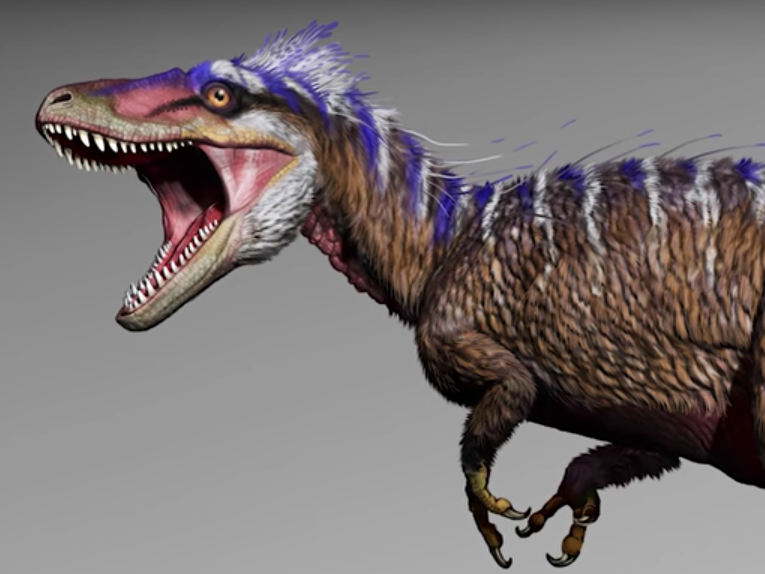Tiny T rex: Ancestor to the king of the dinosaurs discovered
Moros intrepidus helps fill 70 million-year gap in tyrannosaur fossil record

The tyrannosaur group of dinosaurs contains some of our planet’s most successful carnivorous land animals of all time. “Tyrannosaur” directly translates as “tyrant lizards” and the largest of their number – the Tyrannosaurus rex – evolved to measure up to 12.3m (40ft) in length.
But things were not always so easy for these apex predators. A newly discovered relative of the tyrant king reveals a much smaller species, which has helped paleontologists understand the development of the tyrannosaur group and narrowed a 70 million-year gap in the fossil record.
Moros intrepidus was a small tyrannosaur who lived about 96 million years ago in the jungle environment of what is now Utah during the Cretaceous period. The tyrannosaur, whose name means “harbinger of doom”, is now the oldest Cretaceous tyrannosaur species discovered in North America.
Estimated to stand just three or four feet tall at the hip, the nimble Moros made up for its lack of stature with its ability to speed after prey and evade larger predators.
Dinosaurs in the Wild
Show all 18The discovery helps close the gap between the medium-sized, primitive tyrannosaurs remains found in North America dating from the Jurassic period – around 150 million years ago – and the enormous apex predators of the Cretaceous era – around 81 million years ago.
The fossil record between these time periods has been a blank slate, preventing scientists from piecing together the story behind their ascent.
“With a lethal combination of bone-crunching bite forces, stereoscopic vision, rapid growth rates, and colossal size, tyrant dinosaurs reigned uncontested for 15 million years leading up to the end-Cretaceous extinction – but it wasn’t always that way,” said lead author of the research Lindsay Zanno, a paleontologist at North Carolina State University.
“Early in their evolution, tyrannosaurs hunted in the shadows of archaic lineages such as allosaurs that were already established at the top of the food chain.
“When and how quickly tyrannosaurs went from wallflower to prom king has been vexing paleontologists for a long time,” Ms Zanno said. “The only way to attack this problem was to get out there and find more data on these rare animals.”
Her team spent 10 years hunting for dinosaur remains within rocks deposited at the beginning of the Late Cretaceous period, and eventually found teeth and a hind limb from the new tyrannosaur.
“Moros was lightweight and exceptionally fast,” Ms Zanno said. “These adaptations, together with advanced sensory capabilities, are the mark of a formidable predator. It could easily have run down prey, while avoiding confrontation with the top predators of the day.
“Although the earliest Cretaceous tyrannosaurs were small, their predatory specialisations meant they were primed to take advantage of new opportunities when warming temperatures, rising sea level and shrinking ranges restructured ecosystems at the beginning of the Late Cretaceous,” she said. “We now know it took them less than 15 million years to rise to power.”
The research appears in the journal Communications Biology.
Subscribe to Independent Premium to bookmark this article
Want to bookmark your favourite articles and stories to read or reference later? Start your Independent Premium subscription today.

Join our commenting forum
Join thought-provoking conversations, follow other Independent readers and see their replies